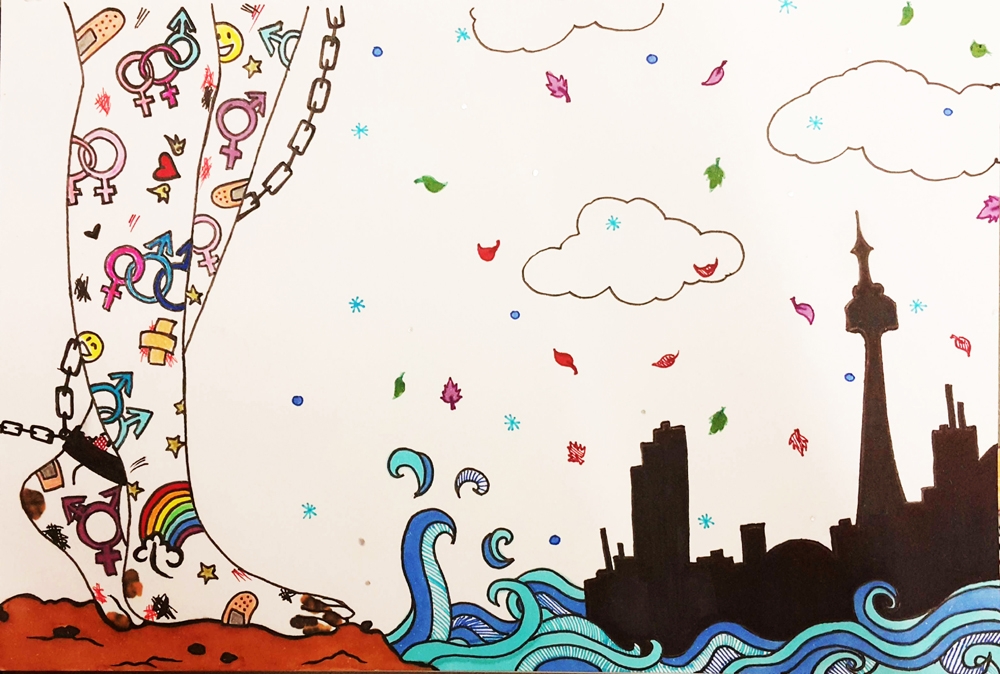Brandon Cheong | Contributor
Featured illustration: The journey of a queer refugee is often met with humiliating and unfair barriers. | Lung Sze Liz
As students and citizens, we pride ourselves on the diversity of York, this city and Canada as a whole. Our nation’s response to the refugee crisis has been considered admirable and we are often associated with peacekeeping and inclusivity.
While recognizing our need to do more to alleviate the suffering of those seeking to escape the scourge of war, we should pause to objectively consider our nation’s policies towards other vulnerable groups such as LGBTQ+ identifying individuals seeking asylum. LGBTQ+ communities across the world are facing a resurgence of criminalization of homosexuality and a lack of protection of basic human rights.
One would hope that for individuals escaping persecution and making it to our shores, the worst would be over. Images of politicians eagerly waiting to welcome families with clothes for the winter and toys for weary children paint a misleading picture of our response to refugees. Envisioning LGBT Refugee Rights in Canada: Exploring Asylum Issues, the 2012 report that was partly contributed to by members of the York community, found that asylum seekers face an archaic claimant system and inadequate integration services.
While the Supreme Court of Canada has recognized LGBTQ+ persons as members of a social group that qualify for asylum, it is important to recognize the narrow Western interpretation of sexual orientation, gender identity and expression by agencies responsible for the social services of LGBTQ+ asylum claimants. Those seeking safety from regions of the world deemed more stable face greater difficulty in being granted asylum.
Humiliatingly, claimants are required to prove that they are members of the LGBTQ+ community. It is an arbitrary and embarrassing process that scrutinizes relationship status and community involvement as a part of the individual’s integration. The report concurs that this is traumatizing for individuals who have lived extremely closeted lives in fear of shame and to protect themselves from getting married or having children.
As for community involvement, claimants are pressured to make decisions that are compromising to their identity. By staking the legitimacy of their claim on some sort of measurable participation, these individuals are required to live openly in an LGBTQ+ community that can be discriminatory, particularly surrounding race and ethnicity. This may lead to claimants severing vital ties to their cultural communities during a time of great insecurity. These practices are in part due to settlement support that is not designed to accommodate needs that a person might have beyond litigation or proceedings, such as access to mental health resources.
Given Canada’s strong social justice culture as a community, we should pause to consider intersectionalities presented in today’s issues. In our drive to resolve them, we might be neglectful of the most vulnerable. As other countries grapple with a swing to the right that is fanning the flames of xenophobia, complacency is tempting. When touting our open arms to those seeking to escape from Syria’s carnage, we should not mislead ourselves to believe that we hold the moral high ground. Our policies require comprehensive reform; we can, and must, do better.


